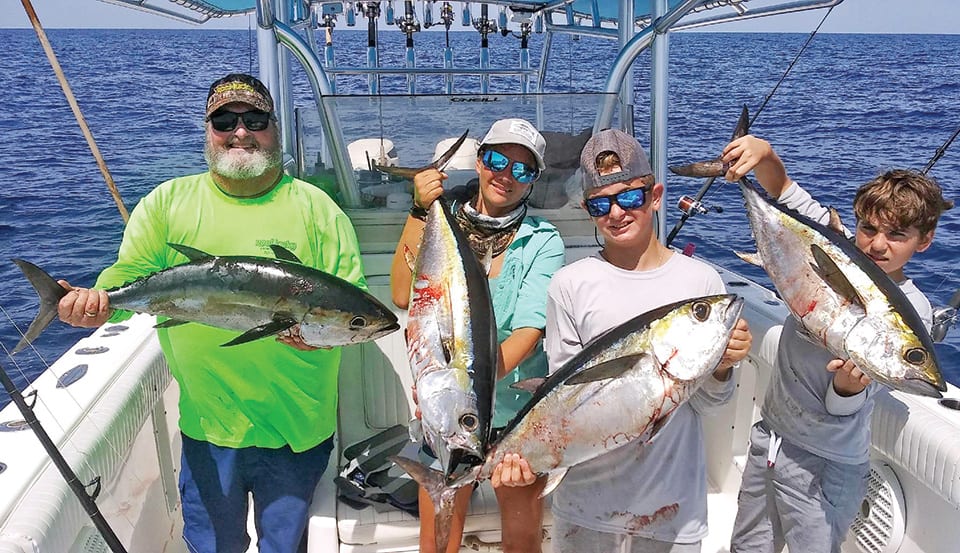Capt. Quinlyn Haddon
Some of the best eating fish in the ocean are back on the menu, and they’re here to stay throughout the summer.
Blackfin tuna have already moved back in on the Gulf Coast in the Tampa area, and they should start becoming a regular visitor on offshore and nearshore trips. We might not have as many blackfin as they do down in the Keys, but what we do have are of the jumbo variety. They produce some respectable-sized steaks.
While blackfin aren’t overly common in this area, they are also not impossible to target. You might also find yourself catching them as bycatch while fishing wrecks with live bait. If you happen to hook one up by accident, keep chumming to keep the school on you, and keep sending out lines rigged the same way as the one that was already hit. Do not be afraid to have multiple hookups going at a time. Sometimes the bite will come in hot and leave just as quickly. Catch as many as you can while they are eating.
While dropping over hard bottom offshore, always make sure to have at least one flat line set up out the back. Utilizing light mono and a small hook, cast a live bait behind the boat. Greenbacks, cigar minnows, small grunts and pinfish all work well. Occasionally open the bail to send out a little more line, so the bait has an opportunity to swim more naturally, faster, and get further down in the water column. This is especially effective at enticing a bite when the bait is acting nervous.
Make sure your drag is set very loose, and don’t do anything fancy until the fish eats the bait and begins pulling drag. If anything, when you’re fishing larger baits, you can open the bail and let the fish really eat before coming tight.
You should be burning a chum block, but also make sure to occasionally toss out a few live baits as chummers, especially when one of your flat-line baits seems to be getting nervous. As we move into summer, this exact same method will catch wahoo and sailfish, without you having to change any of your rigs or bait.
Alternatively, you might stumble across diving birds above a disturbance on the water. Keep your eyes peeled for the telltale flying football shapes, indicative of tuna. Sometimes it might just be a school of bonita, but often tuna and bonita will run with each other, so don’t get discouraged too quickly.
Make sure to have a plan and discuss it with your crew in case you do happen to run over a school while heading offshore. Whether you have a rod with a popper on it for casting, a trolling rod rigged and ready or a rod set up for a pitch bait, make sure everyone else knows what the game plan is so you don’t miss out. Blackfin often surface briefly, and you have to be ready to capitalize on it before they dive back down.
Happy hunting, and don’t forget to treat your tuna fillets like steak. Cut them on a clean table and pat the meat dry if necessary, but never rinse it with freshwater.
Capt. Quinlyn Haddon fishes out of St. Petersburg, Fla. Call her at 504-920-6342 and check her out on Instagram @CaptainQuinlyn.


